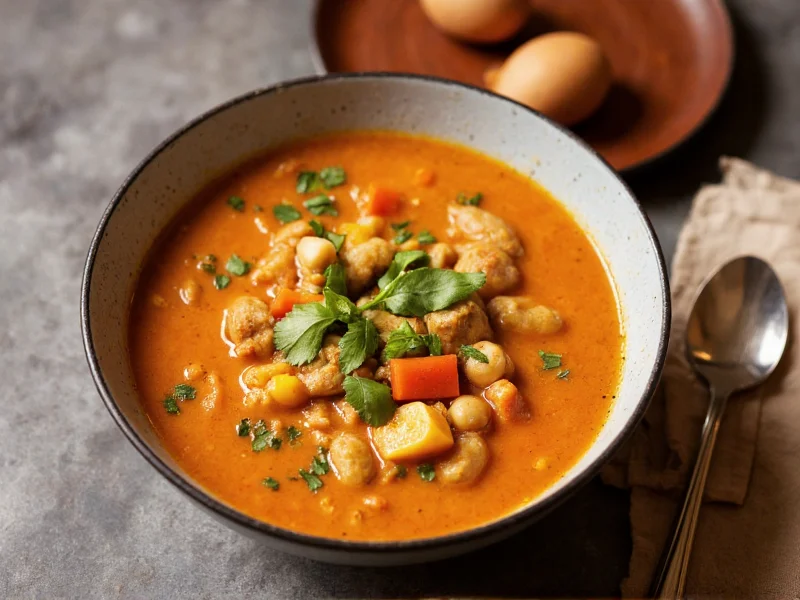Understanding Soup Categories and Terminology
When exploring culinary traditions worldwide, soups represent one of the most universal food categories. The repetition in "soup soup" might indicate a search error, but it provides an opportunity to clarify soup terminology and varieties. Professional chefs and food historians recognize several fundamental soup classifications that form the foundation of global cuisine.
Primary Soup Classifications
Soups fall into distinct categories based on preparation method, ingredients, and cultural origin. Understanding these classifications helps home cooks and culinary professionals select appropriate recipes and techniques.
| Soup Type | Key Characteristics | Preparation Time | Common Ingredients |
|---|---|---|---|
| Broth-Based Soups | Clear liquid foundation, light consistency | 30-90 minutes | Stock, vegetables, herbs, lean proteins |
| Cream Soups | Thickened with dairy or pureed vegetables | 45-75 minutes | Cream, roux, pureed vegetables, seasonings |
| Chowders | Hearty, chunky, often seafood-based | 60-120 minutes | Seafood, potatoes, corn, bacon, cream |
| Bisques | Smooth, creamy, shellfish-based | 90-150 minutes | Lobster, shrimp, cream, brandy, rice |
Global Soup Traditions Worth Exploring
Culinary anthropologists have documented soup preparations dating back 20,000 years, making soups among humanity's oldest prepared foods. Each culture has developed distinctive soup traditions that reflect local ingredients and historical influences.
French cuisine features consommé—a clarified broth requiring precise technique to achieve crystal clarity while maintaining rich flavor. Japanese miso soup represents umami excellence through fermented soybean paste, while West African peanut soup combines indigenous ingredients with colonial influences.
When searching for "soup recipes for cold weather," hearty options like Hungarian goulash or Korean army stew provide warming comfort. For lighter fare, consider searching "healthy vegetable soup recipes" for nutrient-dense options that maintain flavor without excessive calories.
Common Soup-Related Search Patterns
Analysis of culinary search behavior reveals several recurring patterns when people seek soup information:
- "Quick soup recipes under 30 minutes" - addressing time-constrained home cooks
- "Gluten-free soup recipes" - accommodating dietary restrictions
- "Soup storage guidelines" - seeking food safety information
- "Soup thickening techniques" - improving culinary skills
- "Seasonal soup recommendations" - aligning with ingredient availability
Professional chefs emphasize that proper soup preparation requires attention to ingredient quality, cooking temperature control, and seasoning balance. The difference between a mediocre soup and an exceptional one often lies in the careful layering of flavors and appropriate cooking duration.
Practical Soup Selection Guide
Choosing the right soup depends on multiple factors including season, dietary needs, and occasion. For summer months, chilled soups like Spanish gazpacho or cucumber-yogurt soup provide refreshing options. During colder seasons, robust options like beef bourguignon or mushroom barley soup offer comforting warmth.
When accommodating dietary restrictions, consider these substitutions:
- Dairy-free: Use coconut milk instead of cream
- Gluten-free: Replace flour thickeners with cornstarch or arrowroot
- Low-sodium: Prepare homemade stock instead of using commercial broths
- Vegan: Substitute vegetable broth for meat-based stocks
Food safety experts recommend proper storage techniques for soups. Most cooked soups remain safe for consumption for 3-4 days when refrigerated in airtight containers. For longer storage, freezing in portion-sized containers allows for convenient future meals while maintaining quality.
Frequently Asked Questions
What's the difference between soup and stew?
The primary difference lies in liquid content and preparation method. Soups typically have a higher liquid-to-solid ratio with ingredients fully submerged, while stews contain less liquid with ingredients partially exposed during cooking. Stews generally require longer cooking times at lower temperatures to tenderize tougher cuts of meat.
How can I fix an overly salty soup?
To correct oversalted soup, add unsalted liquid such as water or additional unsalted stock to dilute the saltiness. Incorporating starchy ingredients like potatoes or rice can help absorb excess salt. Acidic components like lemon juice or vinegar can also balance salty flavors by providing contrasting taste elements.
What's the best way to store homemade soup?
Cool soup rapidly by placing the pot in an ice bath before transferring to airtight containers. Refrigerate for up to 4 days or freeze for 2-3 months. When freezing, leave 1-inch headspace for expansion. Portioning into single-serving containers allows for convenient reheating without thawing the entire batch.
Can I make soup without meat broth?
Absolutely. Vegetable-based soups can achieve rich flavor through roasted vegetable stocks, mushroom broths, or combinations of umami-rich ingredients like tomatoes, seaweed, and soy products. Properly caramelized onions, garlic, and mushrooms create deep flavor foundations for meatless soups that satisfy even carnivorous palates.
How do professional chefs prevent soup from becoming watery?
Chefs use several techniques to maintain proper consistency: reducing liquid through simmering, creating roux or beurre manié thickeners, pureeing some ingredients, or adding starches like cornstarch slurry. The key is gradual adjustment while tasting frequently to avoid over-thickening, which can be difficult to correct once achieved.











 浙公网安备
33010002000092号
浙公网安备
33010002000092号 浙B2-20120091-4
浙B2-20120091-4